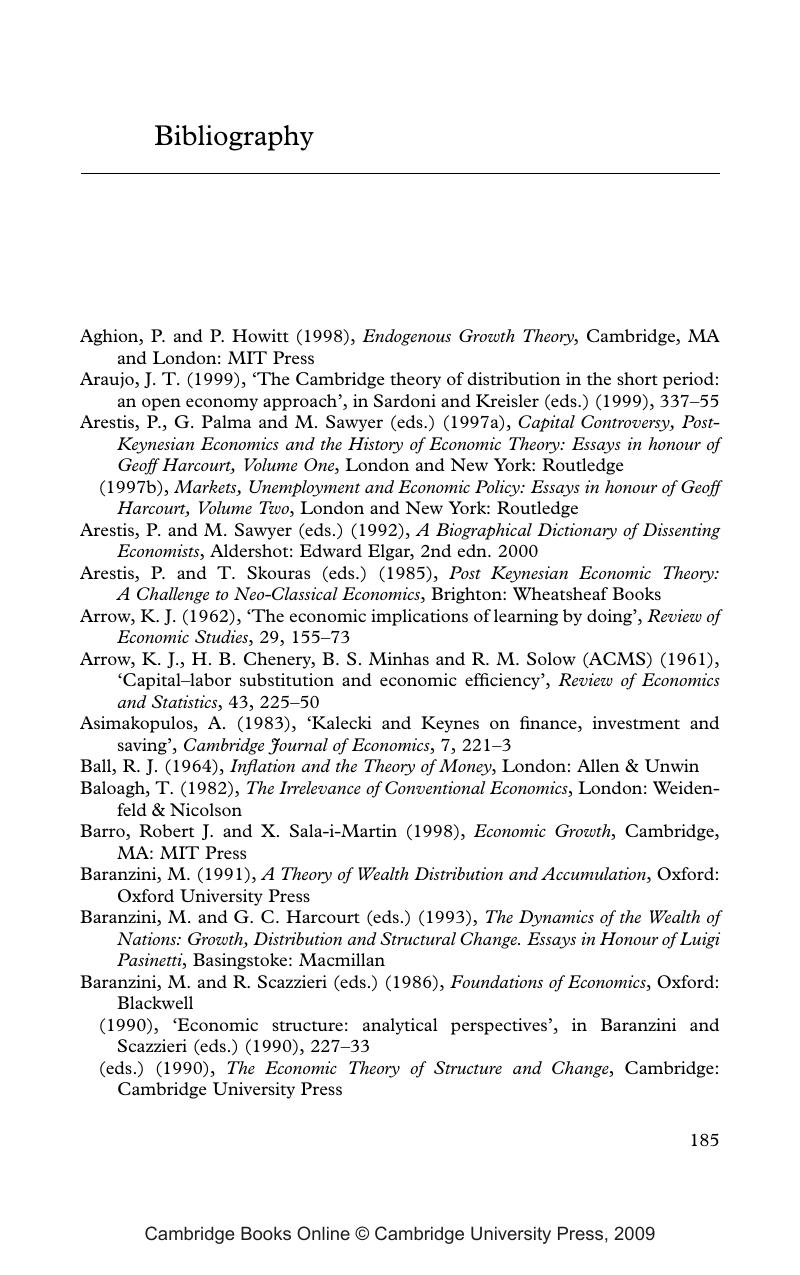Book contents
- Frontmatter
- Contents
- List of figures
- Preface and acknowledgements
- 1 Introduction: why post-Keynesian economics and who were its Cambridge pioneers?
- 2 Post-Keynesian macroeconomic theories of distribution
- 3 Post-Keynesian theories of the determination of the mark-up
- 4 Macroeconomic theories of accumulation
- 5 Money and finance: exogenous or endogenous?
- 6 The complete model: its role in an explanation of post-war inflationary episodes
- 7 Theories of growth: from Adam Smith to ‘modern’ endogenous growth theory
- 8 Applications to policy
- Appendix 1 Biographical sketches of the pioneers: Keynes, Kalecki, Sraffa, Joan Robinson, Kahn, Kaldor
- Appendix 2 The conceptual core of the post-Keynesian discontent with orthodox theories of value, distribution and growth
- Bibliography
- Index
- References
Bibliography
Published online by Cambridge University Press: 22 September 2009
- Frontmatter
- Contents
- List of figures
- Preface and acknowledgements
- 1 Introduction: why post-Keynesian economics and who were its Cambridge pioneers?
- 2 Post-Keynesian macroeconomic theories of distribution
- 3 Post-Keynesian theories of the determination of the mark-up
- 4 Macroeconomic theories of accumulation
- 5 Money and finance: exogenous or endogenous?
- 6 The complete model: its role in an explanation of post-war inflationary episodes
- 7 Theories of growth: from Adam Smith to ‘modern’ endogenous growth theory
- 8 Applications to policy
- Appendix 1 Biographical sketches of the pioneers: Keynes, Kalecki, Sraffa, Joan Robinson, Kahn, Kaldor
- Appendix 2 The conceptual core of the post-Keynesian discontent with orthodox theories of value, distribution and growth
- Bibliography
- Index
- References
Summary

- Type
- Chapter
- Information
- The Structure of Post-Keynesian EconomicsThe Core Contributions of the Pioneers, pp. 185 - 198Publisher: Cambridge University PressPrint publication year: 2006



